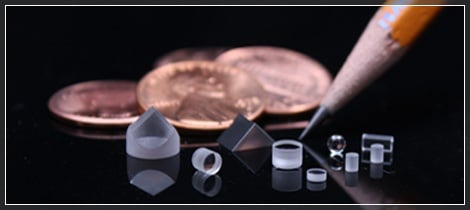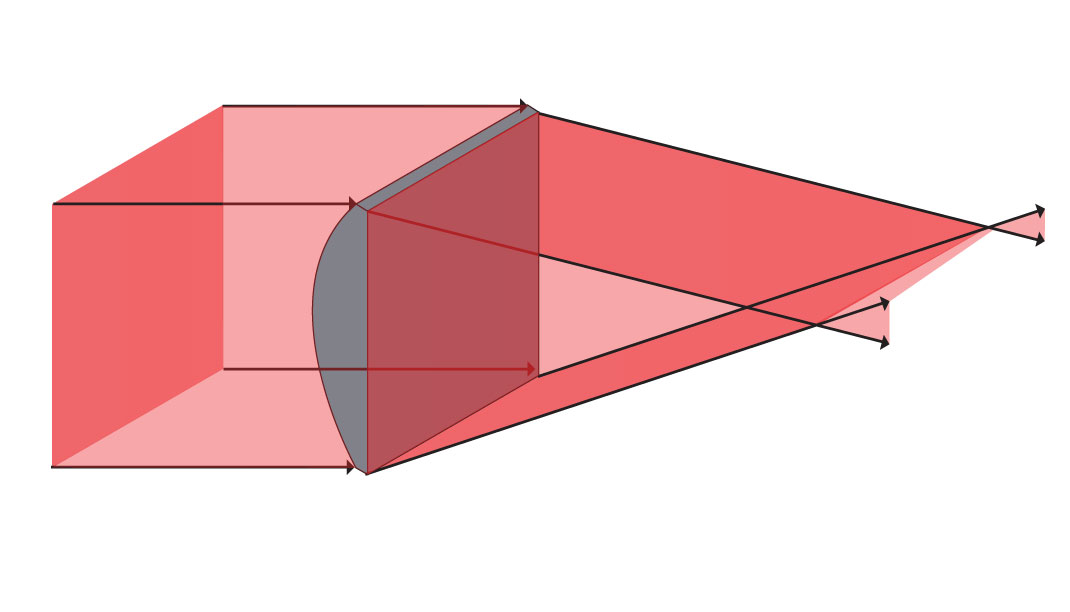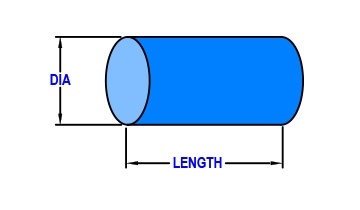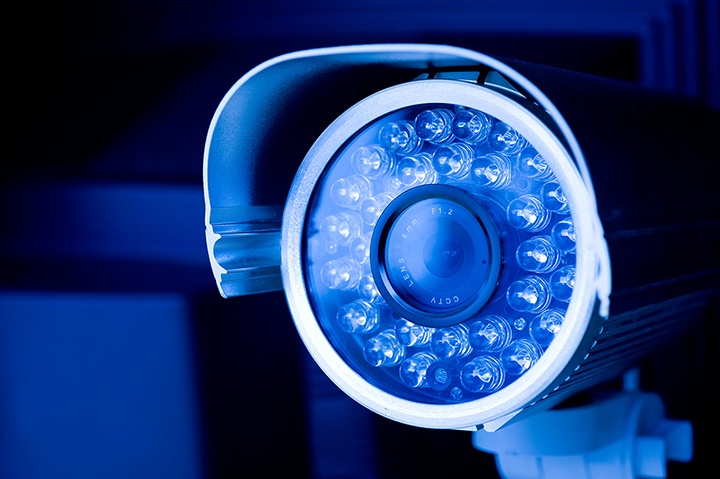Imagine solving a complex puzzle where each piece reveals a hidden secret. The Ross Optical team often helps customers solve such optical puzzles by deconstructing a product or system to understand its design, functionality, and operation and recommending suitable optical alternatives.
Read More >Unlocking Innovations: The Power of Reverse Engineering at Ross Optical
Catalog Micro Optics to Speed Next-Generation Product Development
Micro optics, characterized by their small size and precise functionality, have opened up new form factors and revenue streams in a number of industries by minimizing SWaP requirements, enabling more efficient and compact optical systems. Standard micro optics are typically a few millimeters in size – think the tip of your pencil or the width of a penny — and are used in industries as diverse as medical devices, data center communications, and augmented reality (AR).
Read More >The Pros of Large Diameter Optics in Space
The Pros of Large Diameter Optics in Space
To achieve higher resolution and sensitivity in extraterrestrial observations, larger diameter optics are being developed and used in space applications. Telescopes and observation instruments with up to 12 inches (30cm) diameter optics have proven to be beneficial in enabling more accurate data collection and analysis.
Read More >Three Examples of Using Cylinder Optics for Beam Shaping
Unlike a conventional spherical lens, a "cylinder lens" has curvature along only one axis, as shown in the first figure. Cylinder lenses are useful in applications where light needs to be manipulated in only one direction. The example shown is a plano-convex positive lens, which brings parallel rays to a line focus.
Read More >Zemax: The Software Solution to Find the Ideal Lens
When creating an optical system, there are many challenges an engineer faces when choosing how to design a lens. Choosing the correct lens without the right tools can prove to be very difficult and costly. Zemax, a ray-tracing optical design software program, provides designs and analyses for imaging and illumination systems. This allows for the user to view the way different lenses work while providing analysis diagrams documenting a variety of data sets. Zemax is a great tool to improve performance, shorten time to market, and reduce production costs.
Read More >Secrets of Optical Design, Part 3: Mastering Design Software
This article is the last of our three-part series on optical design secrets. In previous
Three Applications of Rod Lenses
A previous article explored applications of cylinder lenses. In those examples, the lenses were only curved on one side—the other side was flat (i.e. "plano-"). Cylinder lenses can be curved on both sides, though, creating a "rod lens." Rod lenses are unique in that they can be used either side-on or end-on depending upon the application. Here are three examples of their versatility.
Read More >Warming Up: Three Hot Markets for the Infrared Optical Industry
Demand for infrared optical elements has extended beyond just lens assemblies and hot/cold mirrors. Specifically, there is growing interest across the optical industry for bandpass filters, achromats, athermal elements, and polarizing waveplates. The demand spans all IR wavelength bands—near IR (0.75 µm to 1.4 µm), short-wavelength IR (1.4 µm to 3 µm), mid-wavelength IR (3 µm to 8 µm), and long-wavelength IR (8 µm to 15 µm). Advances in sensor and source technology, as well as a changing marketplace, are driving this growth. Demand from three industries stands out as particularly noteworthy:
Read More >Optics Provide a High-Res Look at a Galaxy Far, Far Away
Stock image, Claudio Ventrella
Have you ever tried to take a picture of a bright full moon or a star-filled sky, only to be disappointed when virtually nothing shows up on your phone screen? The distance and brightness of these objects make it nearly impossible to get a sharp image—and that’s just in our own galaxy.
Read More >Looking Forward to Great Views and Productive Conversations at Optics + Photonics in San Diego
SPIE Optics + Photonics (O+P) is coming up in San Diego, California, the week of August 6. The optics industry changes quickly, and O+P is a prime place to catch up on the latest developments across the field, with an even mix of technological innovations and applications.
Read More >SUBSCRIBE VIA EMAIL
Recent Posts
POSTS BY TOPIC
- optical design (29)
- supply chain / inventory management (19)
- optics applications (14)
- standard optics (14)
- meet the team (12)
- custom optics (11)
- optical assemblies (11)
- micro optics (10)
- quality management (10)
- news (9)
- optical coating (6)
- medical optics (5)
- events (4)
- aspheres (3)
- cleaning optics (3)
- optical metrology (3)
- achromatic doublets & triplets (2)
- endoscope (2)
- mechanical engineering (2)
- Infrared (1)
- endoscopic test (1)
- large optics (1)













